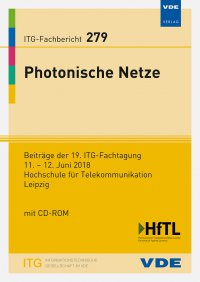Mode Group Power Coupling Analysis for Short Reach Space Division Multiplexing
Conference: Photonische Netze - 19. ITG-Fachtagung
06/11/2018 - 06/12/2018 at Leipzig, Deutschland
Proceedings: Photonische Netze
Pages: 6Language: englishTyp: PDF
Personal VDE Members are entitled to a 10% discount on this title
Authors:
Sandmann, Andre (Hochschule Wismar, Wismar, Germany & University of Kiel, Kiel, Germany)
Ahrens, Andreas; Lochmann, Steffen (Hochschule Wismar, Wismar, Germany)
Pachnicke, Stephan (University of Kiel, Kiel, Germany)
Abstract:
In this contribution a novel method for determining the power coupling coefficients between mode groups for arbitrary devices under test in a multi-mode system is presented. It is based on impulse response measurements and is used to evaluate the power coupling between mode groups for a multi-mode fusion coupler and a 1 km graded-index multi-mode fiber (MMF) at 1327 nm operating wavelength. The obtained coefficients highlight that a lot of power coupling between mode groups takes place in the studied fusion coupler. In contrast, when transferring through the 1 km MMF the majority of the incident power stays in the samemode group. Based on the obtained power coupling coefficients, impulse responses for a (2x2) multiple-input multiple-output (MIMO) transmission are simulated and the corresponding bit-error rate (BER) performance for different parameter configurations is studied. The simulation setup includes single-mode fiber (SMF) to MMF splices aligned with different radial eccentricities for mode specific excitation and multi-mode fusion couplers for mode multiplexing and demultiplexing. Comparing the SMF to MMF launch eccentricities shows that an offset of 15 µm paired with the centric launch shows the best BER results in the analyzed configuration.


